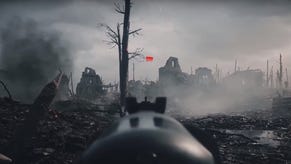Battlefield 1 Xbox One Review: The Cavalry's Here
Does a new setting elevate DICE's venerable shooter?
This article first appeared on USgamer, a partner publication of VG247. Some content, such as this article, has been migrated to VG247 for posterity after USgamer's closure - but it has not been edited or further vetted by the VG247 team.
World War I was one of the most brutal conflicts in all of human history. In describing the battlefield for his audience, Hardcore History host Dan Carlin likened it to Mordor. So in bringing the war to end all wars to mainstream gaming, it's only appropriate that Battlefield 1 should start out by having you die. A lot.
Battlefield 1's prologue opens with a succession of soldiers dying in the mud amid doomed trench charges and exploding tanks, which serves to drive home the feeling that this is not business as usual for the series. We're a long way from the fighters jets and high technology of Battlefield 3 and 4. This is the series as it began close to 15 years ago: down and dirty. And when it sticks to that, it's awesome. It's only when it begins to cheat that it gets into trouble.
As always, Battlefield 1 is a sprawling series that mixes tanks, boats, and planes with class-based first-person action. It's meant to feel big and overwhelming with its disorienting explosions, collapsing buildings, and rumbling tanks. And with 64 people on the field, even the largest maps never feel empty. On the contrary, they feel positively chaotic.
But in moving the setting to World War I, Battlefield 1 feels even more amplified and intense. When you hear the scream of a bayonet charge, the hair on the back of your neck will stand straight. You'll laugh at a horse charging around the field until their sword suddenly flashes and your head is separated from your body. It is in some ways a return to the franchise's roots, and in others a total breath of fresh air. After years of modern-day and futuristic shooters, it feels great to be on a historical battlefield again.
Mud and Blood
In keeping with the franchise's renewed focus on history, Battlefield 1's single-player campaign in some ways feels like a history special. Rather than tell the story of one soldier or company, it opts to move from the French countryside to the skies above London to the Middle East as it tells its series of self-contained tales. I've played about half of them so far; and while they certainly have their moments, they're also a little too business as usual for my tastes.
To wit, after the conclusion of the prologue, the first story casts you in the role of a young tank driver fighting behind enemy lines. You are essentially on your own as you roll through the countryside, periodically stopping to repair your tank as it breaks down. It's fine, but it's also the type of mission that you would find in one of the older Call of Duties, even going so far as to have you sneak around an enemy camp hunting for fuses. It's not the type of mission I would associate with World War I.
On the flipside, "Friends in High Places," which features a gambler impersonating a pilot, has a really excellent mission where you have to make your through No Man's Land—the bloodsoaked area between the Allied and German trenches. True, it's yet another stealth mission—Battlefield 1 is loaded with them—but it feels a bit more in keeping with the setting. Less interesting are the flight segments, which effectively turn your plane into an X-wing. I've often thought about what bugs me about campaigns in first-person shooters, and I think the answer is that they just feel too much like arcade games. In trying to appeal to uber casual gamers, they sacrifice anything remotely resembling the challenge and depth that drives their multiplayer modes. Battlefield 1 falls into that trap more than I would like.
Still, I like what EA have done with their war stories. I like that we see much more than the Somme and Verdun and the Meuse-Argonne Offensive. In effect, EA has turned their campaign into a history lesson, offering glimpses of forgotten battles like the Italian offensive in the Alps while lecturing on subjects like the famous Lost Generation—the survivors who grew up in the wake of the trauma of World War I. It's obvious that they thought a lot about how to portray The Great War in a videogame context, and I appreciate that. It's only when they go back to the standard first-person shooter playbook that I start to get annoyed.
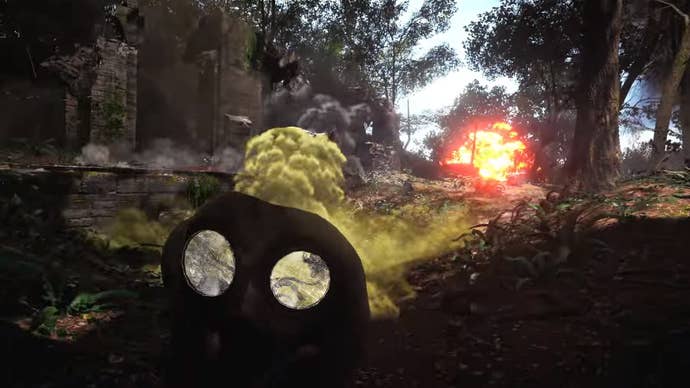
Land of the Dead
In some ways, the same can be said for Battlefield 1's multiplayer. Bolt action rifles dominated World War I; and for all the advances of that era, they were still a long way from the weapons that would dominate World War II. But in an effort to diversify the weapon selection as much as possible, DICE has dug deep and introduced a variety of experimental guns, the practical effect being that you won't have to part with your precious LMGs and submachine guns. It speaks to DICE's unwillingness to fully commit to the concept of World War I shooter, pushing them to cut corners wherever possible. But in the end, it doesn't matter all that much.
What matters is that the old Battlefield is back. This is the Battlefield of close-range dogfights, dynamite, and pitched battles over piles of rubble with a flag sticking out. There are no helicopters, guided missiles, or night vision scopes. And you know what? I'm glad. I'm tired of climbing into a tank and having ten different people lock onto me at once. If they're going to blow me up, I want them to earn it.
The back to basics approach fits nicely with Battlefield's other biggest strength: its scope. You'll see tanks rumbling through the streets and fighter planes circling in the air as you frantically fight from house to house in an effort to hold onto your precious flags. It feels like absolute chaos, and just staying alive for a few moments can be a big challenge. Still, if you stick with your team and you're willing to play support, you can make some meaningful contributions even if you're not the best shot.
In that vein, the traditional classes—Assault, Medic, Support, and Scout—return to Battlefield 1, albeit with some modifications. In particular, Battlefield 1's classes are more specialized this time around, with no one class able to do anything. Assault is great at close range but weak at long range, losing their rifle grenades to the Media. Support, meanwhile, can throw ammo, repair vehicles, and suppress enemies with their LMGs, but they've lost their ability to attack and destroy tanks. It's frustrating in how constraining it can be, but perhaps necessary—the synergy between classes are much more apparent now.
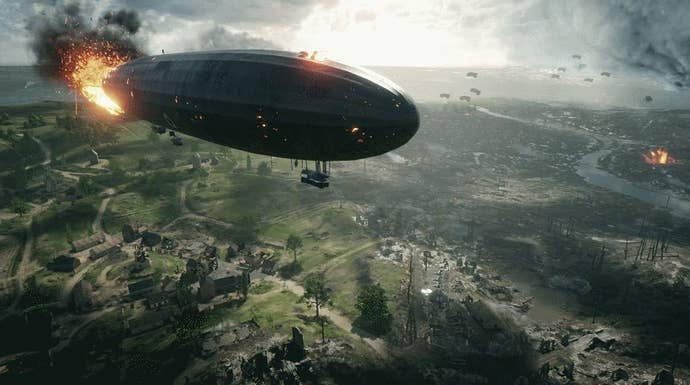
Of course, as you level up, Battlefield 1 begins to fall back on its old ways a bit. High-powered scoped riles and LMGs become prevalent, and it starts to bear more of a resemblance to its modern counterparts. Perhaps this was inevitable, but it still made me roll my eyes a bit. But there are other little touches keep it from feeling too derivative. Gas, for instance, is an omnipresent threat, and donning your gas mask keeps you from aiming down your sights, which feels like an appropriate tradeoff. There are also the aforementioned bayonet charges, which are at once awesome to behold and totally chilling.
And in keeping with its World War I theme, Battlefield 1 introduces behemoths—massive weapons that will arrive to aid the losing side of a battle. They include a battleship, an airship, and an armored train, and they're all capable of doing great damage without single-handedly swinging the course of the battle. Of them all, the airship is probably the most annoying, able to cut directly across the field and rain death from above, but it also makes for a gigantic target. The train, meanwhile, rarely seems to do much of anything, mostly because its stuck on a defined route. All three feel appropriate for the era—the Germans famously used Zeppelins to bomb London during World War I—and are effective without being overpowered. They're also genuinely imposing, further adding to Battlefield 1's sense of scope.
In general, I think there's a lot to like about Battlefield 1. It retains the best parts of the series—the vehicles, the scope, the weightiness of the action—while shaking things up just enough to be interesting. Whenever I start to grouse about it being too modern, I see a horse gallop past or a biplane fly overhead and I smile. This is Battlefield as it should be: a chance to dive into a series of historical battles and have fun.
InterfaceBattlefield 1 is hampered by long load times and menus that suffer from significant input delay. If you're too slow to back out of a competed battle, you will have to sit and wait several minutes for the next battle to load. It could use a lot of work.
SoundOutstanding audio remains a hallmark of the series, and that is once again the case for Battlefield 1. Playing with a high-quality surround sound system is a mind-blowing experience.
VisualsBattlefield 1 is probably the best-looking shooter on the market today. Its vistas are simply awe-inspiring, and sometimes you just have to sit and marvel as bombs explode around you and planes roar overhead. Once again, DICE has outdone themselves.
ConclusionI went in to Battlefield 1 with admittedly low expectations. I was excited about the setting, but I had my doubts that DICE could execute on it given their recent track record. Thankfully, DICE not only does justice to World War I, but refocuses the series as well. Battlefield 1 does a great job of getting back to basics, and it's aided by some fantastic map design. Overall, this is the most fun that I've had with the series since Battlefield Bad Company 2, making it one of 2016's best shooters.
The Operations
So let's talk about Battlefield 1's Operations—probably the closet approximation you will find to actual World War I combat in Battlefield 1. There are four operations in total, each featuring two maps, with one side on offense and the other side on defense. The offense's goal is to take two control points and push defenders back to the next line of defense, repeating the process until they either run out of attackers or the defenders run out of map. The defenders simply have to outlast them.
Operations might actually be my favorite mode in Battlefield 1. Moreso even than Conquest, it best captures the absolute chaos of World War I as tanks, planes, and stormtroopers try to overwhelm their opponent's defenses and take their control points. The defined roles also encourage a greater sense of teamwork, making it easier to launch concerted attacks, which stands in contrast to the sometimes piecemeal nature of Conquest.
Attackers have three waves of 150 soldiers apiece to try and take two maps worth of control points, which is no easy task when facing a determined and well-organized defense. Realizing this, Battlefield 1 deploys an airship to aid the attackers once the first wave goes down, complicating efforts to hunker down and hold each point. In return, defenders can launch planes and use anti-aircraft gun to try and take down the behemoth, though it requires a concerted attack to ultimately destroy.
Despite the presence of the airship, defenders seem to be at an advantage in the Operations. As they fall back, the fortifications at their disposal become more and more formidable, with one map even featuring a castle (as an aside, I love that Battlefield 1 has castles in it). That makes it comparatively easy for defenders to hold fast and fend off the waves of attackers, who have to work together to break through the concentrated enemy defenses.

It's for that reason that I think forcing the attackers to traverse two full maps is a mistake. In addition to requiring attackers to play almost perfectly to avoid running out of soldiers, it greatly draws out match times and makes the Operations mode less appealing overall. Granted, limiting the Operations to one map might swing the advantage to the attackers; but in my experience, when the attackers lose, it's usually in the first map and not the second. In any case, the Operations mode feels a bit bloated for its own good, which is too bad because the attack and defense dynamic works really well for Battlefield 1.
Another issue that worries me a bit is that the Operations may struggle to get enough players to make them worthwhile. I've had much better luck getting a game going in Conquest or Domination—familiar modes that reliably draw players of all skill levels. But when I try to go to Operations, I'm frequently confronted with long matchmaking times and dropped games. This will hopefully sort itself out when the full release hits, but early returns haven't been great. But with all that said, the Operations mode is a lot of fun, and I'm glad to see that Battlefield 1 is trying to be true to its subject matter.
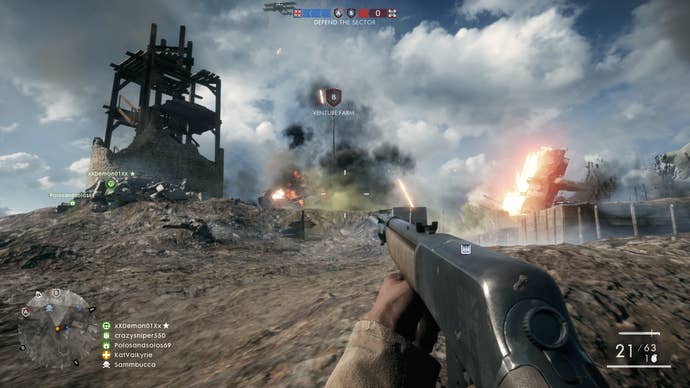
Outside of the Operations, Battlefield 1 mostly moves across familiar territory. Domination is Conquest mode without vehicles, making it more akin to Call of Duty or any other competing shooter. Personally, I'm not a huge fan of Domination, mostly because it takes too much emphasis off Battlefield's key strengths, particularly its scope. That said, it does make for quicker matches, which some might find appealing.
Rush also makes a return; and again, while it's not my favorite mode in the world, it has its share of fans. In essence, Rush is a smaller-scale variant of Operations, with one side defending a pair of control points—in this case, telegraph stations—and the other side trying to blow them up. Like Domination, its smaller-scale makes for quicker games, which some may find appealing.
But in my humble opinion, Conquest continues to be where it's at. It does the most to differentiate Battlefield from its competitors, and it doesn't suffer from the balance issues of other modes. Along with Team Deathmatch, it will almost certainly continue to be the game's most popular mode. But even the Operations mode doesn't quite catch on, it's a noble experiment that plays to Battlefield 1's strengths. Hopefully it will be further refined over the course of additional DLC releases.
InterfaceBattlefield 1 is hampered by long load times and menus that suffer from significant input delay. If you're too slow to back out of a competed battle, you will have to sit and wait several minutes for the next battle to load. It could use a lot of work.
SoundOutstanding audio remains a hallmark of the series, and that is once again the case for Battlefield 1. Playing with a high-quality surround sound system is a mind-blowing experience.
VisualsBattlefield 1 is probably the best-looking shooter on the market today. Its vistas are simply awe-inspiring, and sometimes you just have to sit and marvel as bombs explode around you and planes roar overhead. Once again, DICE has outdone themselves.
ConclusionI went in to Battlefield 1 with admittedly low expectations. I was excited about the setting, but I had my doubts that DICE could execute on it given their recent track record. Thankfully, DICE not only does justice to World War I, but refocuses the series as well. Battlefield 1 does a great job of getting back to basics, and it's aided by some fantastic map design. Overall, this is the most fun that I've had with the series since Battlefield Bad Company 2, making it one of 2016's best shooters.
Final Thoughts
Battlefield wasn't in the best place going into Battlefield 1. Public perception of the series definitely took a hit with Battlefield 4, which struggled with a variety of issues, and DICE a whole was coming off the disappointing Star Wars Battlefront. For that reason, Battlefield 1 kind of needed to hit the reset button a bit; and in that regard, I think it's succeeded.
Although it cheats in some ways, Battlefield 1 does enough to capture the flavor of World War I that it doesn't feel like a reskinned World War II shooter. The Operations mode works particularly well in this regard, concentrating the action in a way that brings out the sheer chaos of World War I. Whether you're attacking or defending, you'll find yourself diving for cover and praying as your position is bombed to hell by zepplins, artillery, and grenades. It's intense, exciting, and very Battlefield.
It's aided by some pretty strong maps, each of which requires a very different style of play to succeed. The Argonne Forest is rugged and unforgiving, with much of the action concentrated around a main bridge separating either side, while St. Quentin's Scar slowly turns the once idyllic French countryside into a burning hellscape. My personal favorite, though, is Empire's Edge: a map set alongside the Adriatic coastline that manages to work in a huge number of vehicles. All of them feature interesting terrain, a wide variety of places to attack, and the kind of layered design that makes for a good multiplayer map.
In the meantime, the single-player draws from a variety of sources: World War I literature, historic battles, and even adventure films. It can be a little hit or miss—I was put off by "Friends in High Places" and its X-wing-like fighter plane—but each story has at least once memorable moment. And they can even be pretty emotional, as in the case of one story where an old soldier remembers his brother. These stories aren't exactly All Quiet on the Western Front, but they are more thoughtful than I was expecting, certainly more than I'm used to seeing from a military shooter.
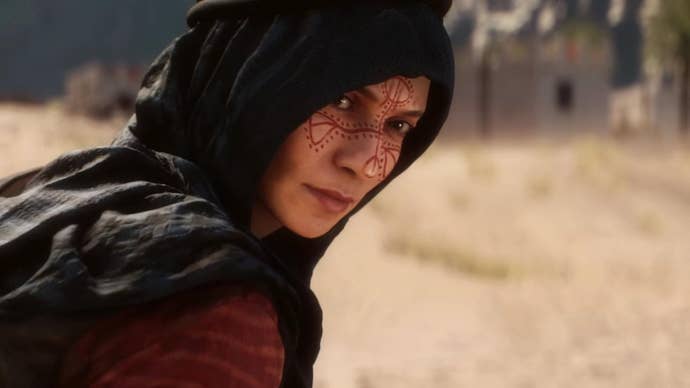
Through it all, Battlefield remains faithful to its identity as a sprawling shooter—a massive playground loaded with tanks, planes, and blimps. You can argue that it takes way too long to get into games—load times are pretty long in Battlefield 1—and that matches take far too long (around 30 minutes minimum); but once you're on the field, you can't deny the power of hunkering through an artillery barrage while tanks roll past you. Just last night, I yelled at the top of my lungs when I shot down a passing attack plane in my tank. You're just not going to get that in another mainstream shooter.
In that vein, you could argue that Battlefield 1 is an acquired taste. At the end of the day, there will be plenty of people who prefer the faster pace of Call of Duty or Halo, or the beautifully balanced squad play of Overwatch. But as a history fan and someone who just delights in driving around in tanks, Battlefield is very much my shooter, and this is the most fun I've had with the series in ages. In bringing the action back to the World War I, they've recaptured a large part of what was missing from the previous games. You can tell people are still adjusting, as tanks have been allowed to run amok among through the field because no one seems to know how to kill them just yet. Take away the fancy gadgets, and suddenly everyone flounders.
At the end of the day, I can point to plenty of little things that annoy me about Battlefield 1: the over-reliance on experimental weapons, the load times, the fact that Operations are just too big. But at the end of the day, this is the freshest, most focused, and flatout different that the series has felt in ages. For once, DICE seems content to do their own thing and not worry too much about the competition, and the result is an excellent game.
InterfaceBattlefield 1 is hampered by long load times and menus that suffer from significant input delay. If you're too slow to back out of a competed battle, you will have to sit and wait several minutes for the next battle to load. It could use a lot of work.
SoundOutstanding audio remains a hallmark of the series, and that is once again the case for Battlefield 1. Playing with a high-quality surround sound system is a mind-blowing experience.
VisualsBattlefield 1 is probably the best-looking shooter on the market today. Its vistas are simply awe-inspiring, and sometimes you just have to sit and marvel as bombs explode around you and planes roar overhead. Once again, DICE has outdone themselves.
ConclusionI went in to Battlefield 1 with admittedly low expectations. I was excited about the setting, but I had my doubts that DICE could execute on it given their recent track record. Thankfully, DICE not only does justice to World War I, but refocuses the series as well. Battlefield 1 does a great job of getting back to basics, and it's aided by some fantastic map design. Overall, this is the most fun that I've had with the series since Battlefield Bad Company 2, making it one of 2016's best shooters.




